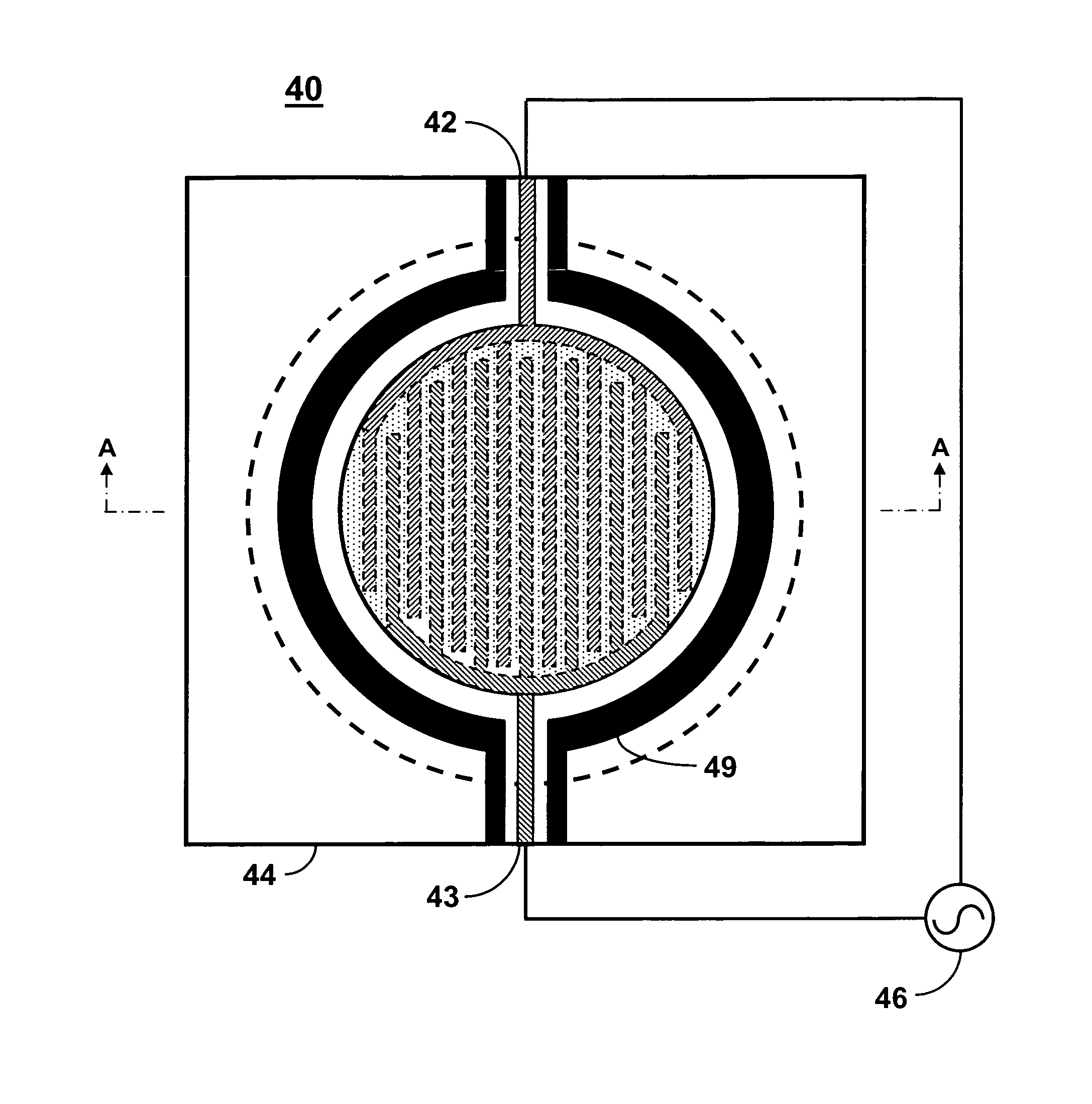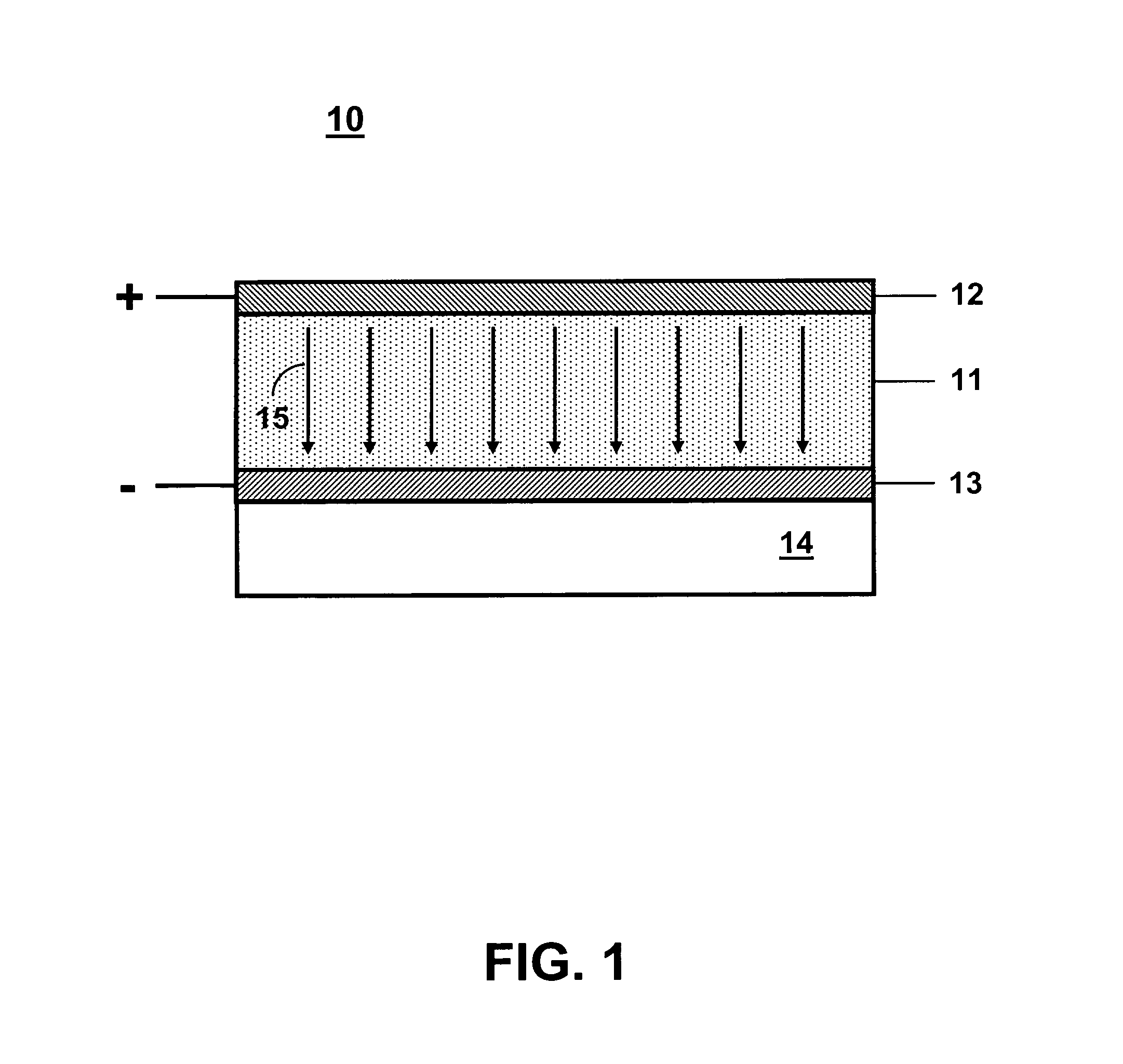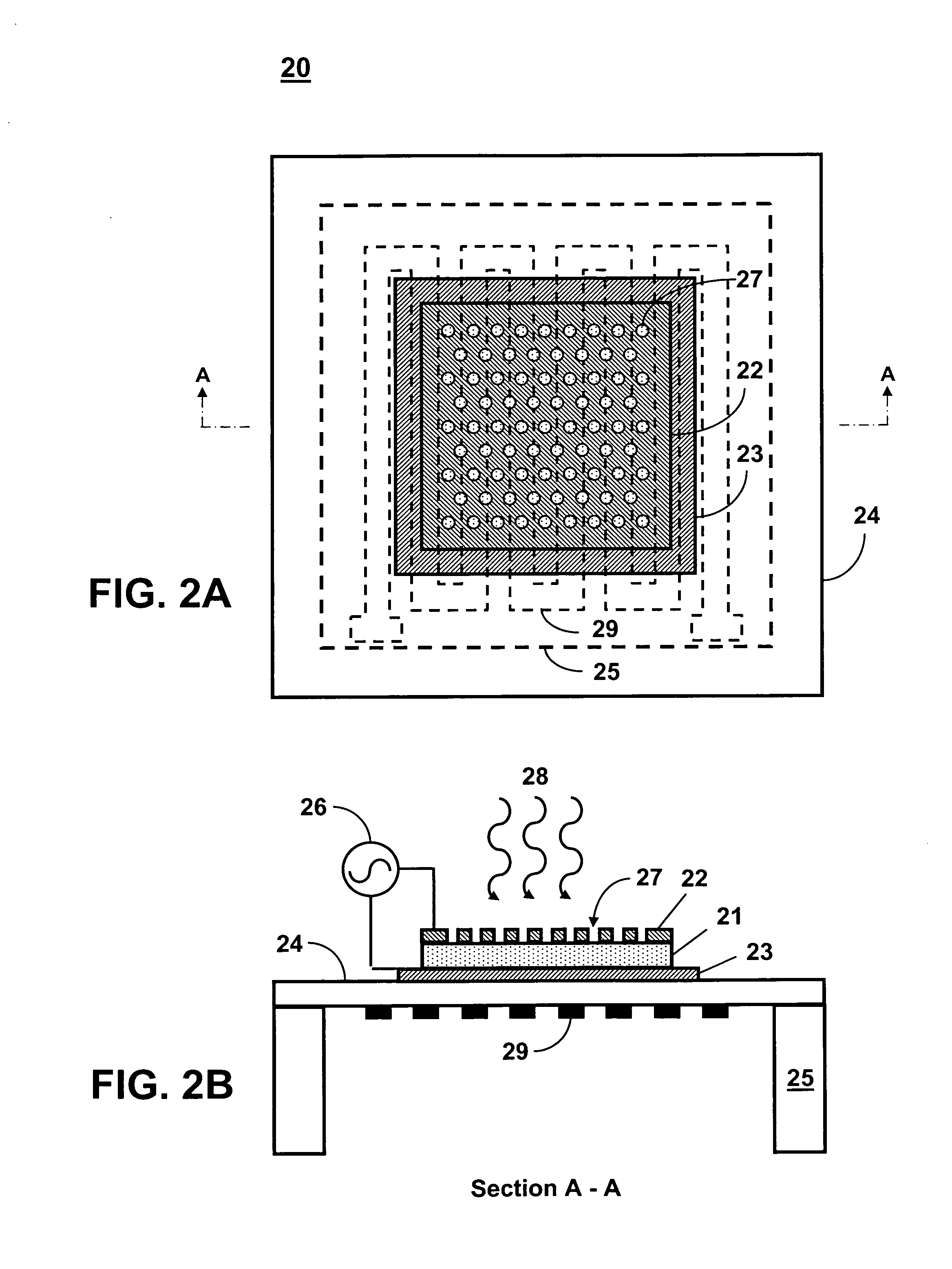Capacitive chemical sensor
a capacitive chemical sensor and capacitive technology, applied in the field of chemical sensing, can solve the problems of insufficient analyte collection for detection or proper identification, insufficient sample material collection, and waste of precious time collected, so as to prolong the service life of the sensor, enhance the preferential adsorption or reaction, and similar or greater film impedance shift
- Summary
- Abstract
- Description
- Claims
- Application Information
AI Technical Summary
Benefits of technology
Problems solved by technology
Method used
Image
Examples
Embodiment Construction
[0022]In FIG. 1 is shown a conceptual illustration of a parallel-plate capacitive sensor 10 comprising a dielectric material 11 sandwiched between opposing parallel-plate electrodes 12 and 13 disposed on an electrically insulating substrate 14. A voltage source (not shown) is connected to the driving electrode 12 and the sensing electrode 13 is connected to the input of an impedance measuring circuit (not shown). Field lines 15 go from the positive electrode 12 to the negative electrode 13. Oscillating signals from an alternating-current voltage source can be input to the driving electrode 12 to establish an alternating electric field between the driving and sensing electrodes 12 and 13. The sensing electrode 13 detects the mutual capacitance between the two electrodes 12 and 13. The mutual capacitance C of a parallel-plate capacitor is given by:
C=κ∈oA / d
where A is the area of the plates, d is the distance between the plates, ∈o is the permittivity constant, and κ is the dielectric ...
PUM
 Login to View More
Login to View More Abstract
Description
Claims
Application Information
 Login to View More
Login to View More - R&D
- Intellectual Property
- Life Sciences
- Materials
- Tech Scout
- Unparalleled Data Quality
- Higher Quality Content
- 60% Fewer Hallucinations
Browse by: Latest US Patents, China's latest patents, Technical Efficacy Thesaurus, Application Domain, Technology Topic, Popular Technical Reports.
© 2025 PatSnap. All rights reserved.Legal|Privacy policy|Modern Slavery Act Transparency Statement|Sitemap|About US| Contact US: help@patsnap.com



